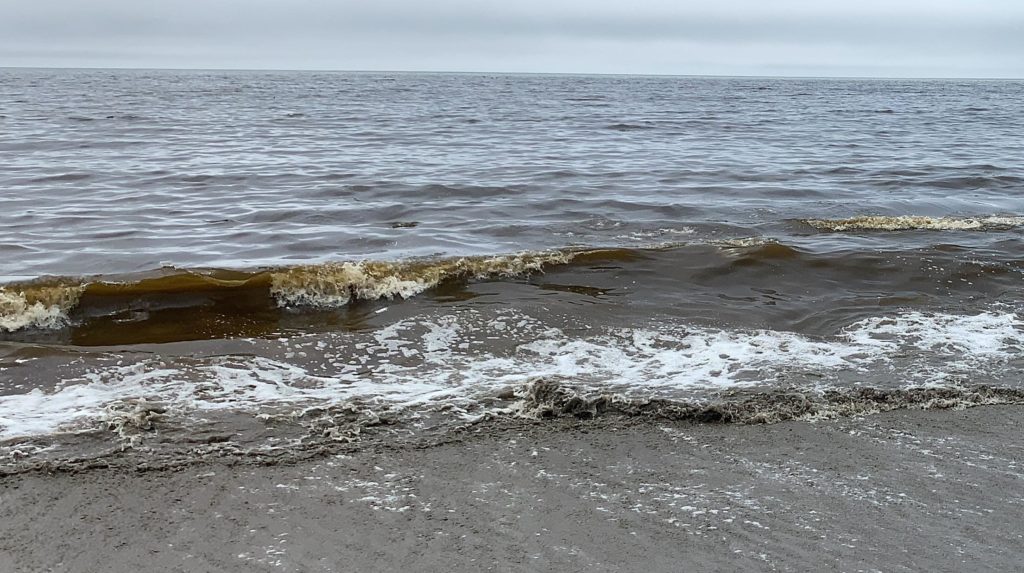
Red tides have returned to Santa Cruz beaches in Monterey Bay. The regular phenomenon started in late July and has continued through the first two weeks of August. Red tides are a bloom of single-celled algae called phytoplankton that turn ocean waters various colors. Phytoplankton are abundant in both marine and freshwater ecosystems, are an essential component of marine food webs and provide much of the oxygen in our atmosphere. In this case, the surf break has taken the appearance of brownish to reddish muddy water. From the air, you can see streaks of reddish brown permeate northern Monterey Bay.
Red tides tend to occur more often in the summer and into the fall when days are longer and temperatures are higher. These are favorable conditions for phytoplankton to multiply rapidly. Although there are many kinds of phytoplankton, this particular bloom is dominated by a dinoflagellate from the genus Margalefidinium, according to Santa Cruz county water-quality specialist Nilo Alvarado (“Lookout Santa Cruz” Aug 9, 2021). This genus was also identified as abundant in August 4 and 11 samples from Santa Cruz Wharf (Monterey Bay Weekly Phytoplankton Sampling project).
Some red tides are harmless, others produce toxins that are harmful to other organisms in the environment. These toxic red tides are called “harmful algal blooms” or HABs. Past HABs have caused mortality events among seabirds and marine mammals. A major die off of seabirds was linked to HABs in 2007. According to a source at Beach COMBERS (Coastal Ocean Mammal / Bird Education and Research Surveys), there has already been a large spike in cormorant and Northern fulmar deposition at several beaches around Aptos, where this ongoing algal bloom is occurring.
The California Department of Public Health releases monthly Marine Biotoxin Monitoring Reports. For more immediate conditions, refer to the Monterey Bay Weekly Phytoplankton Sampling project where water samples are taken from Monterey and Santa Cruz wharfs.